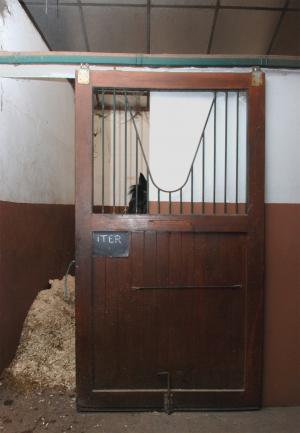You can bet on Iter!
Imagine if 25 children were born into your home every year. Imagine that you couldn't just give them regular names like Alexandra, Dimitri, Carmen or Jean-François, but that you had to find names that were unique—names that have not been used within the last 30 years, and that evoke speed, strength and grace.
Imagine this, and you have an idea of the kind of problem regularly faced by a major racehorse breeder. And you can understand why a horse can be named ... Iter.
"I'm an avid newspaper reader," says Jean-Claude Seroul, who lives in Puyricard and owns one of the largest French breeding farms in Normandy. "Seven years ago, the press was full of stories about this great scientific project named ITER that France hoped to host. I liked the name, which is short and elegant, and I liked the concept of developing a safe, clean, unlimited source of energy."
So when in April 2003 a young foal was born to the American stallion Key of Luck and the French mare Princesse Baie, the name came naturally: this would be a horse named Iter.
The life of a racehorse is shorter than that of a science project and at seven, Iter is now past his prime. Jean-Claude Seroul sold him in 2009, but the black thoroughbred still appears, carrying new colours, in the regional races in Marseille, Cagnes-sur-Mer on the Riviera and at the Oraison racetrack not very far from ITER.
Iter-the-horse lives in Cabriès, some 15 kilometres north of Aix-en-Provence. He is one of the 300-odd boarders at the Centre d'Entraînement des Plaines de l'Arbois. When we visited him last week, he was just back from the races in Cagnes-sur-Mer. "He will run for another year and then retire," says Jean-Marc Capitte, who's trained the horse since he was a yearling. "I guess his present owner will sell it. Iter's got another 15 to 20 years of life ahead of him. He'll still be a great horse to ride around."



